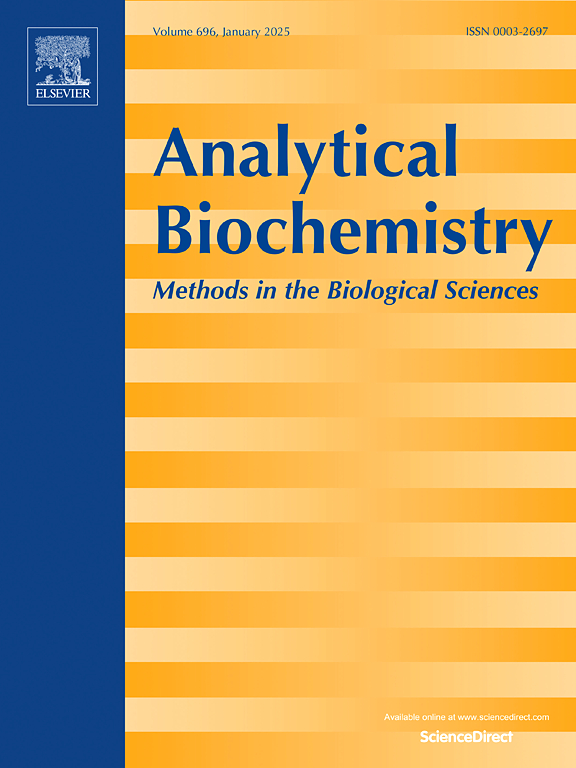海藻酸盐基复合微球脲酶的固定化
IF 2.5
4区 生物学
Q2 BIOCHEMICAL RESEARCH METHODS
引用次数: 0
摘要
本研究旨在探讨芦荟(Aloe barbadensis) (Av)、海泡石(Sp)和卡拉胶(Cr)在海藻酸盐珠固定化脲酶中的作用。为此,仅合成了海藻酸盐(A)、AAv、ASp和ACr复合微球。同时,在脲酶存在下共合成酶固定化微球(A-U、AAv-U、ASp-U和ACr-U)。用FTIR和SEM对制备的微球进行了表征。确定了固定化酶活性的最佳pH值和温度,并与游离酶进行了比较。游离酶、AAv-U、Asp-U的最适ph值为7,ACr为8,A-U为4.5。游离酶的最适温度为20℃左右,而固定化酶在较高温度下表现出较高的活性。此外,还考察了酶固定化微球在两种不同温度和不同环境下的重复使用性和储存稳定性。通过研究酶活性随底物浓度的变化来确定Michaelis-Menten常数。本文章由计算机程序翻译,如有差异,请以英文原文为准。

Urease immobilization on alginate-based composite micro-beads
The aim of this research is to investigate the contribution of incorporating Aloe Vera (Aloe barbadensis) (Av), sepiolite (Sp) and carrageenan (Cr) to alginate beads in immobilizing urease enzyme. For this purpose, only alginate (A), AAv, ASp and ACr composite beads were synthesized. Simultaneously, the enzyme-immobilized beads (A-U, AAv-U, ASp-U and ACr-U) were formed by co-synthesis in the presence of urease. All prepared beads were characterized by FTIR analysis and SEM images. The optimum pH and temperature values of the immobilized enzyme activity were determined and compared with those of the free enzyme. The optimum pHs were 7 for free enzyme, AAv-U, Asp-U enzymes, 8 for ACr, and 4.5 for A-U. While the optimum temperature for free enzyme was around 20 °C, immobilized enzymes showed high activity at higher temperatures. In addition, the re-usability and storage stability of the enzyme-immobilized beads were investigated at two different temperatures and in two different environments. Michaelis-Menten constants were determined by studying the variation of enzyme activity with substrate concentration.
求助全文
通过发布文献求助,成功后即可免费获取论文全文。
去求助
来源期刊

Analytical biochemistry
生物-分析化学
CiteScore
5.70
自引率
0.00%
发文量
283
审稿时长
44 days
期刊介绍:
The journal''s title Analytical Biochemistry: Methods in the Biological Sciences declares its broad scope: methods for the basic biological sciences that include biochemistry, molecular genetics, cell biology, proteomics, immunology, bioinformatics and wherever the frontiers of research take the field.
The emphasis is on methods from the strictly analytical to the more preparative that would include novel approaches to protein purification as well as improvements in cell and organ culture. The actual techniques are equally inclusive ranging from aptamers to zymology.
The journal has been particularly active in:
-Analytical techniques for biological molecules-
Aptamer selection and utilization-
Biosensors-
Chromatography-
Cloning, sequencing and mutagenesis-
Electrochemical methods-
Electrophoresis-
Enzyme characterization methods-
Immunological approaches-
Mass spectrometry of proteins and nucleic acids-
Metabolomics-
Nano level techniques-
Optical spectroscopy in all its forms.
The journal is reluctant to include most drug and strictly clinical studies as there are more suitable publication platforms for these types of papers.
 求助内容:
求助内容: 应助结果提醒方式:
应助结果提醒方式:


